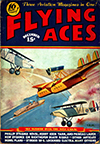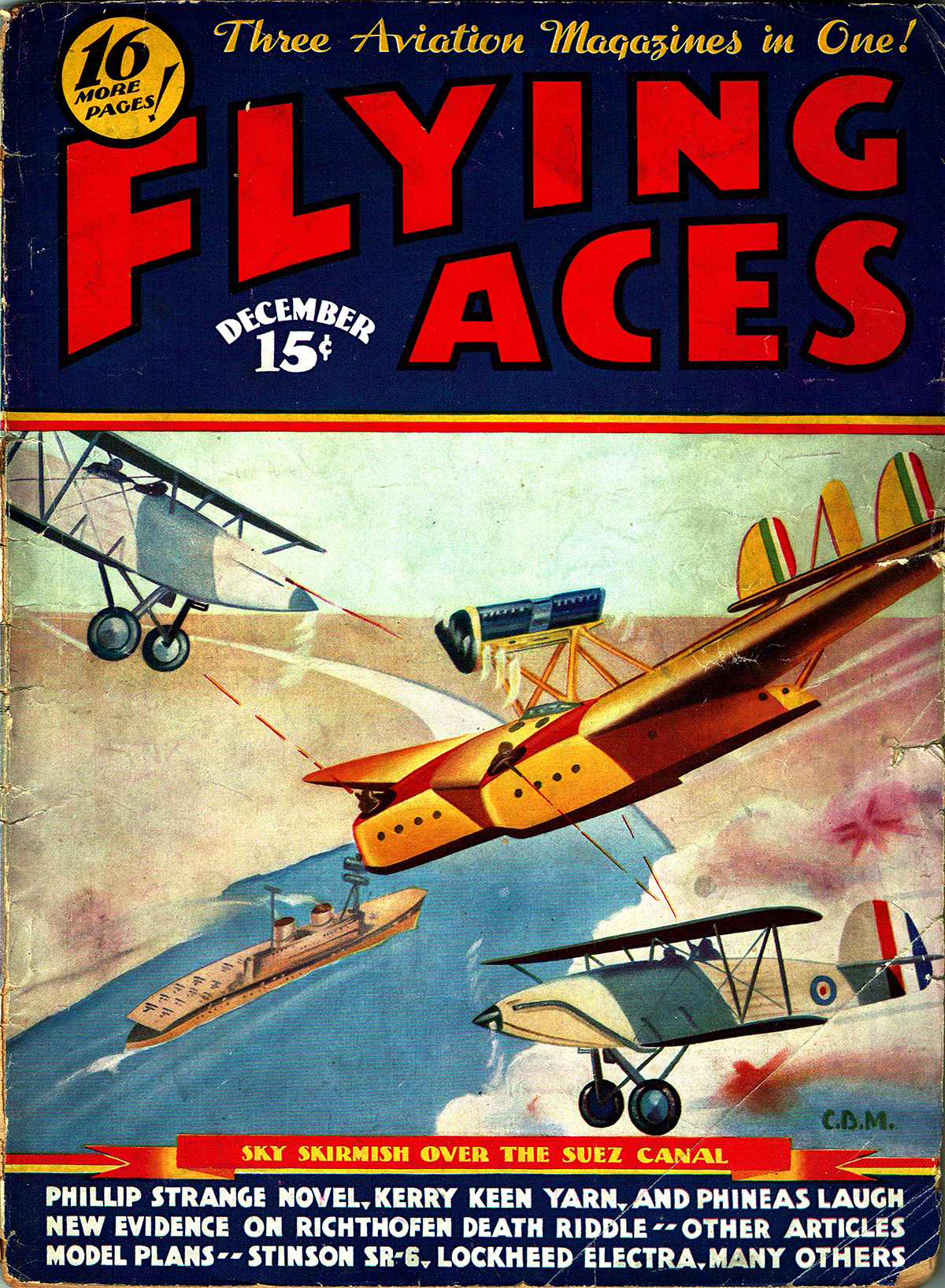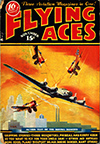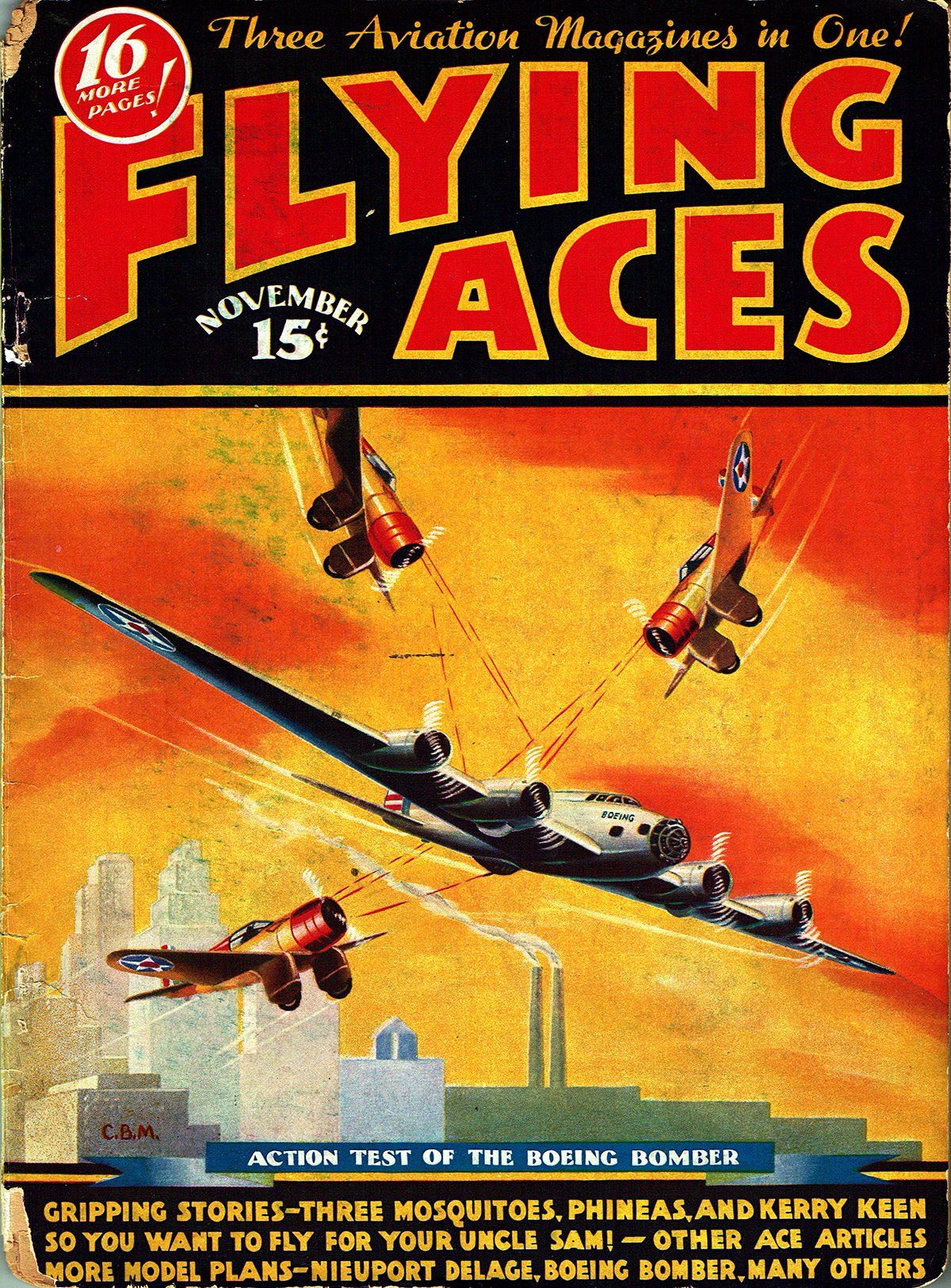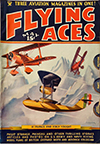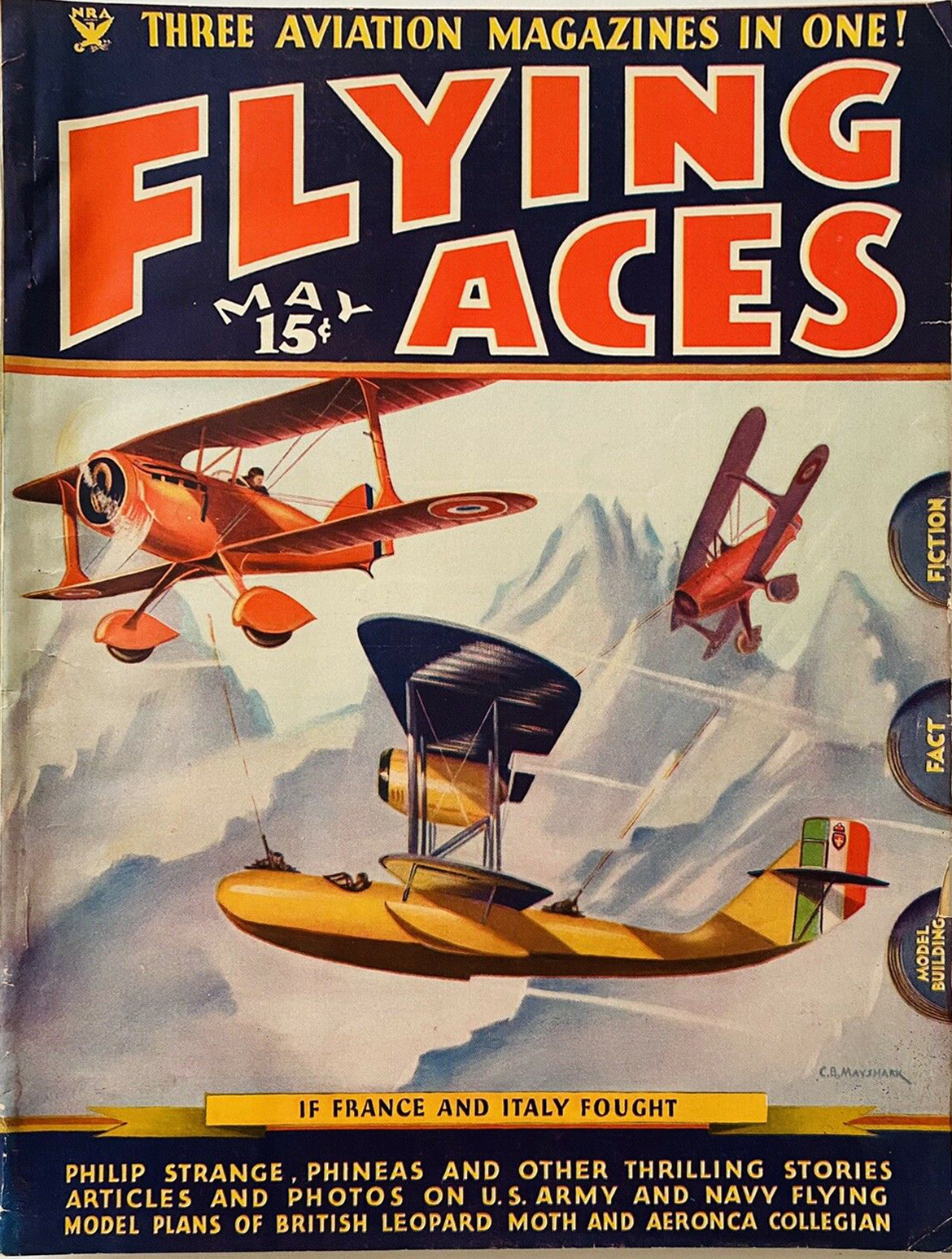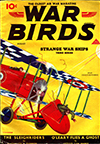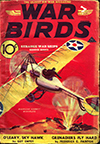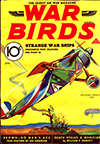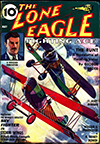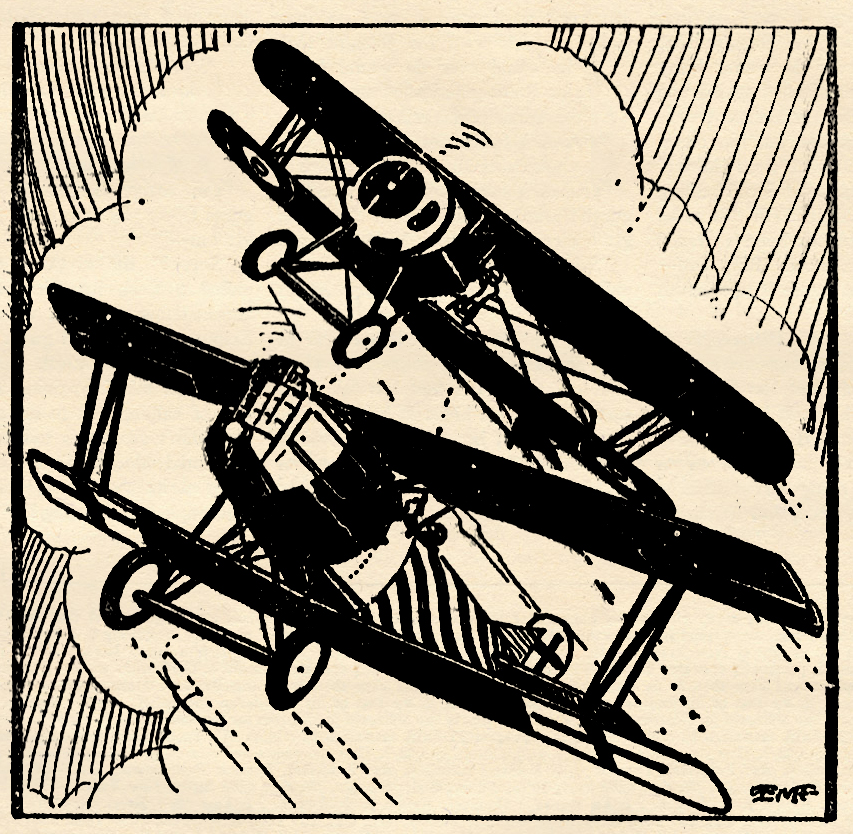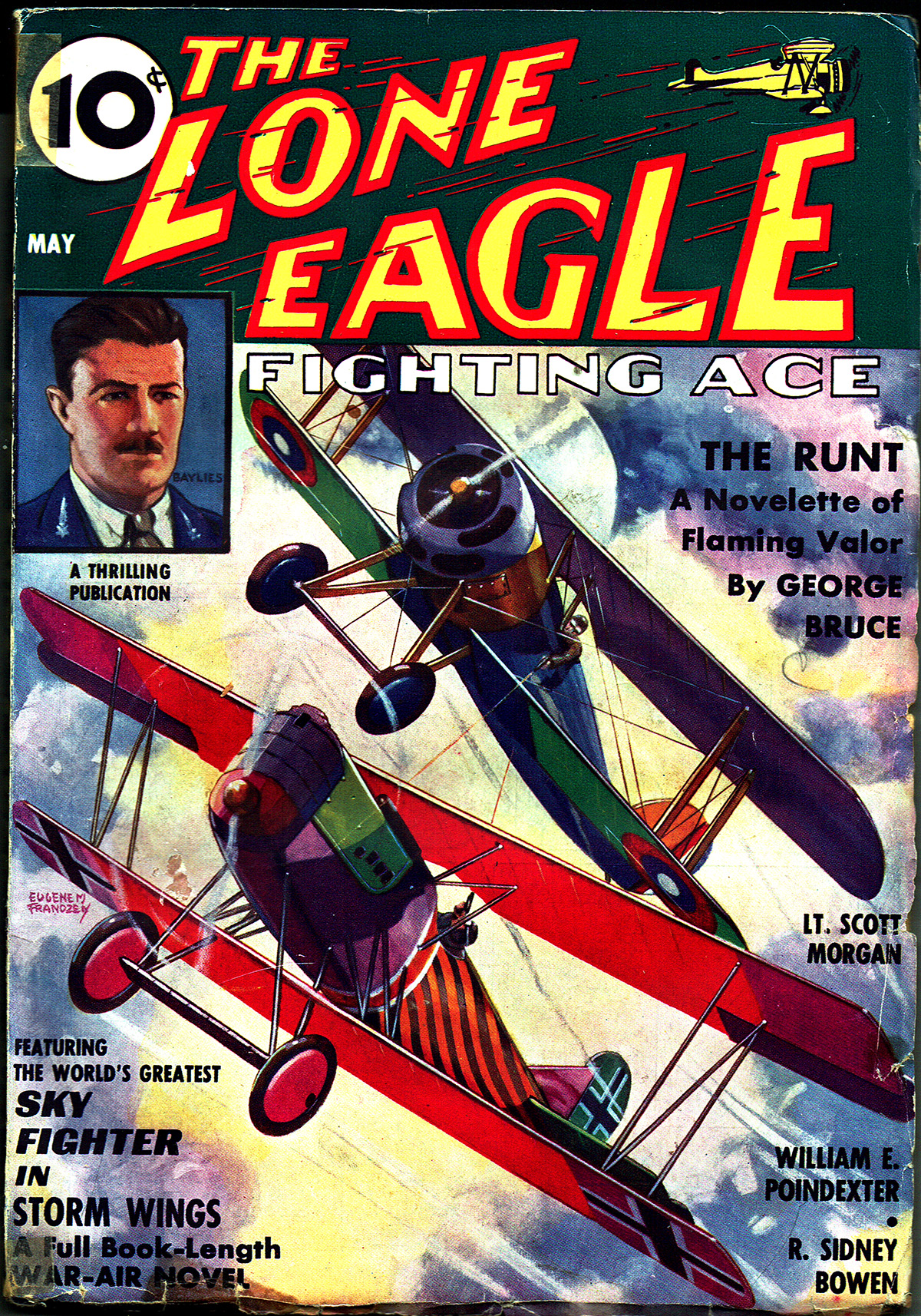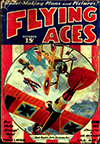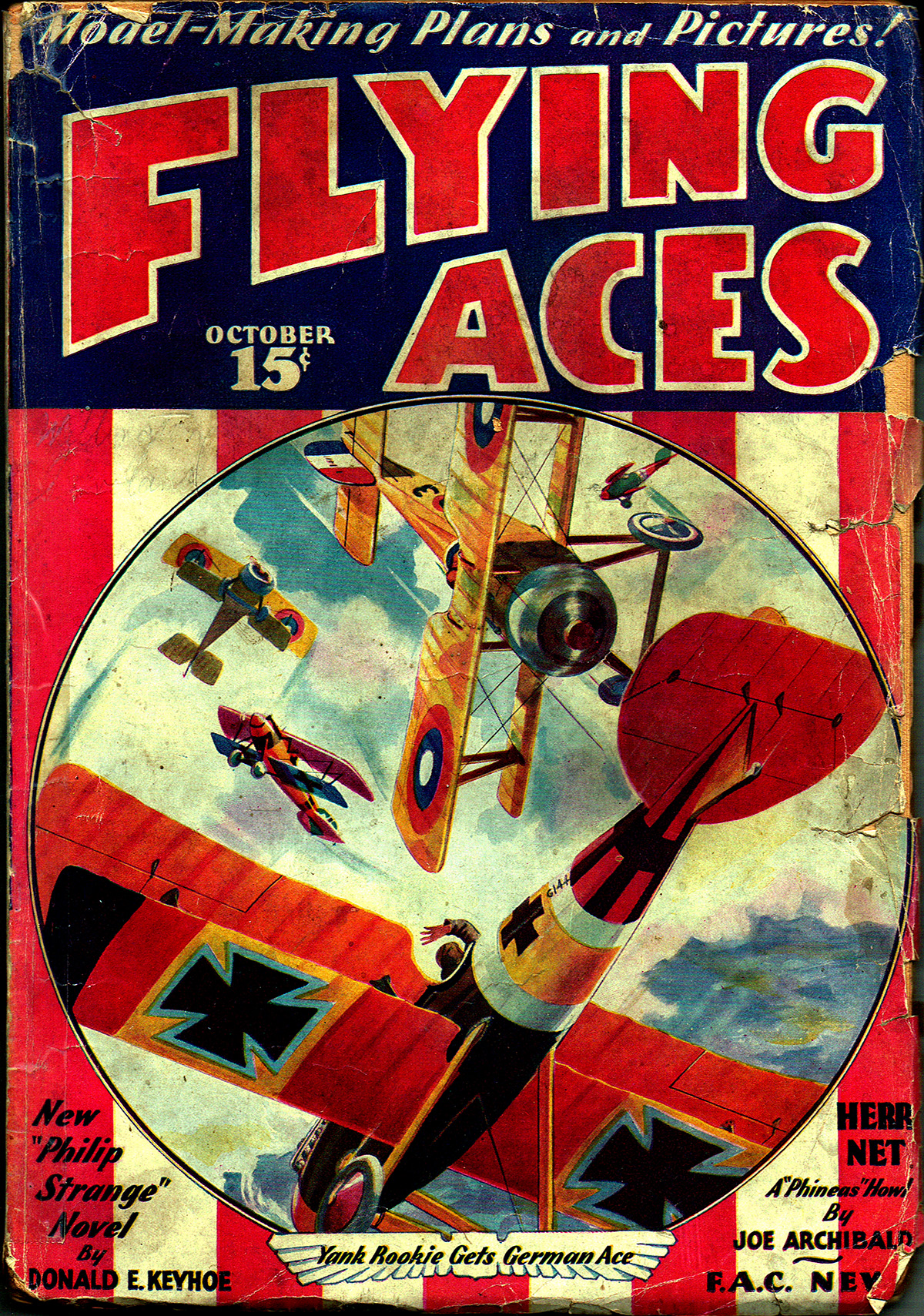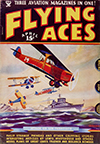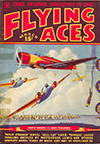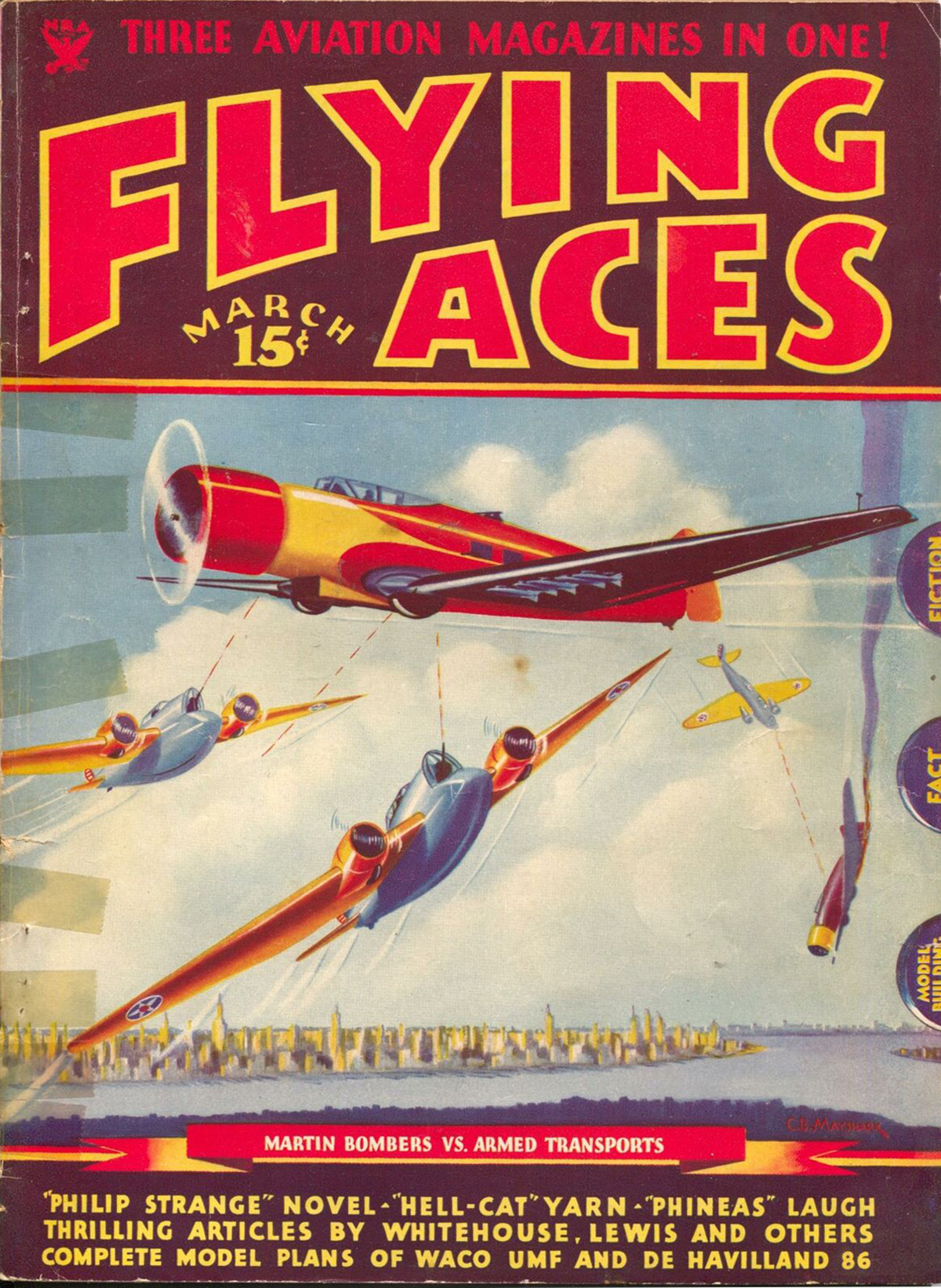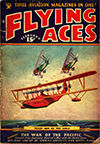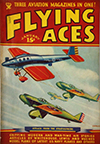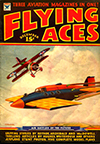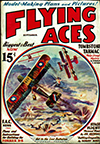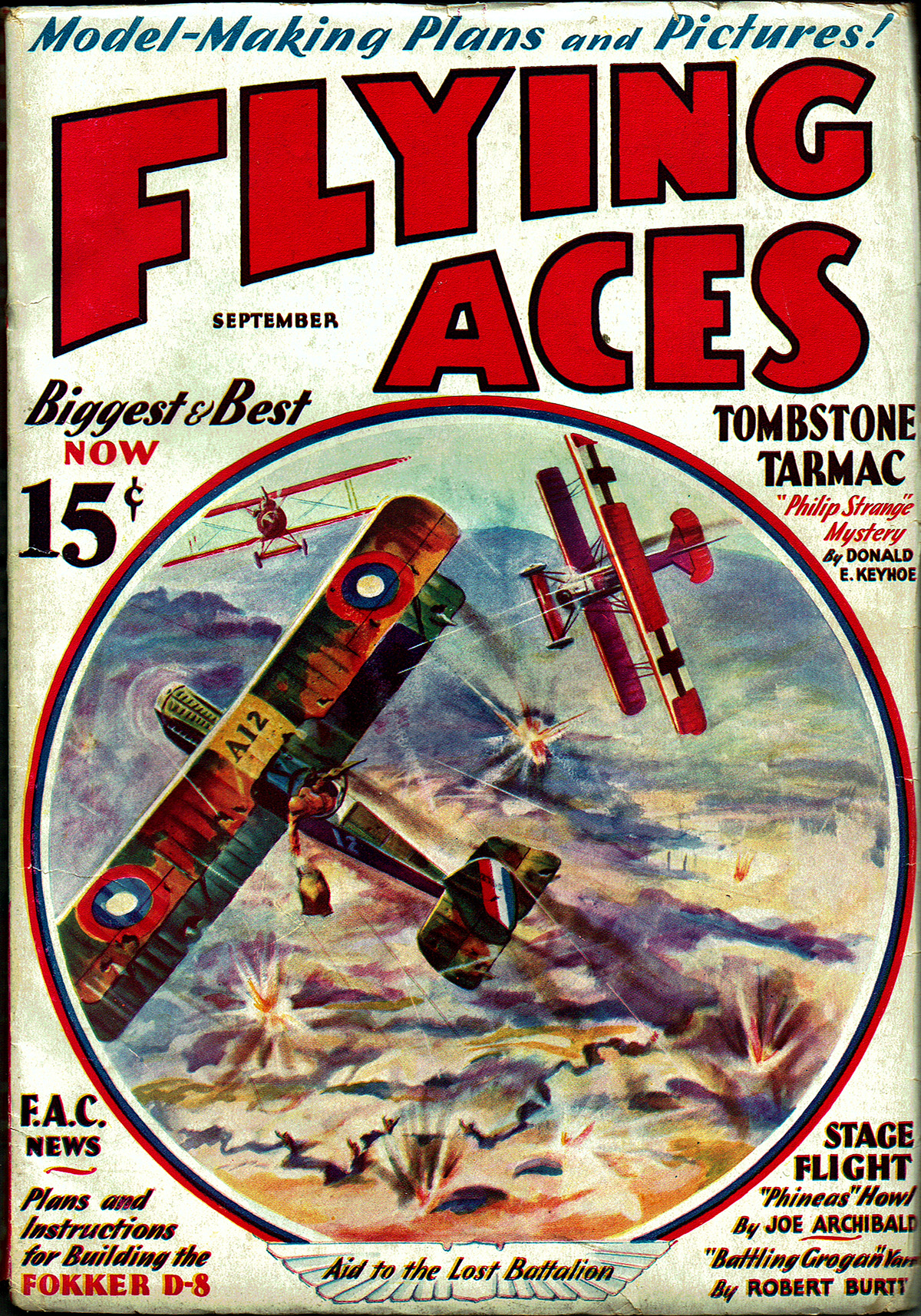“Flying Aces, January 1936″ by C.B. Mayshark
THIS May we are once again celebrating the genius that is C.B. Mayshark! Mayshark took over the covers duties on Flying Aces from Paul Bissell with the December 1934 issue and would continue to provide covers for the next year and a half until the June 1936 issue. While Bissell’s covers were frequently depictions of great moments in combat aviation from the Great War, Mayshark’s covers were often depictions of future aviation battles and planes, like January 1936’s thrilling story behind its cover portrays one of the means by which military action might be applied against Italy, whom the League regards as the aggressor in the Italo-Ethiopian conflict by the other League of Nation members!
Legions of the League
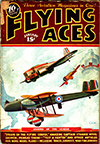 FOR the first time since the inception of the League of Nations, members of that international body have combined in an effort to restrain a member State from pursuing a “war of aggression.†The invocation of the Covenant’s dreaded Article XVI sets a decided precedent, and those peace-loving inhabitants of the earth who place their faith in the League are proud of the fact that at last a united exertion of power has been mobilized in opposition to conquest by the force of arms. The League Covenant states that a member may not go to war, either officially or unofficially, against another member for the purpose of annexing territory. If an act of war is committed in defiance of the Covenant, the other members have the right to punish the offending nation with a view to ending hostilities. If economic and financial sanctions fail to provoke an attitude of cooperation on the part of the aggressor, then the only course open for the League is the application of force. In other words, the League may declare a war to end a war.
FOR the first time since the inception of the League of Nations, members of that international body have combined in an effort to restrain a member State from pursuing a “war of aggression.†The invocation of the Covenant’s dreaded Article XVI sets a decided precedent, and those peace-loving inhabitants of the earth who place their faith in the League are proud of the fact that at last a united exertion of power has been mobilized in opposition to conquest by the force of arms. The League Covenant states that a member may not go to war, either officially or unofficially, against another member for the purpose of annexing territory. If an act of war is committed in defiance of the Covenant, the other members have the right to punish the offending nation with a view to ending hostilities. If economic and financial sanctions fail to provoke an attitude of cooperation on the part of the aggressor, then the only course open for the League is the application of force. In other words, the League may declare a war to end a war.
This month we have portrayed on our cover one of the means by which military action might be applied against Italy, whom the League regards as the aggressor in the Italo-Ethiopian conflict. The ominous shadow of the powerful air forces of the three leading members of the League—England, France, and Russia—might prove in itself to be a threat of sufficient force to curb Italy. On the other hand, it might not.
Italy is rightly a proud nation. More than once in the course of her colorful history she has been the most powerful nation on the face of the earth, and the Twentieth Century finds her among the world’s first rank powers. However, the consensus is that Italy cannot afford to resist such military sanctions as Britain, France, and Russia could array against her.
Thus far, Italy has turned a deaf ear to the dangers of economic and financial sanctions. As this is written, the League has just applied boycotts on Italian exports and has barred the import of key products. This drastic move is designed to cut Rome’s vital sales by 70 per cent, thereby putting millions of Italians out of work. Common sense tells us that if this move is effective, Italian resources will be strained to the limit if Rome intends to continue the African war. However, the likelihood of her immediately withdrawing her troops seems remote, however effective the League boycott may prove to be. It is with alarm, therefore, that we view the future if present sanctions fail to force peace. As has been said, the only recourse is the application of armed force—unless the League backs out.
If an actual conflict between Italy and the League members comes to pass, it is difficult to say whether it would take place on the Continent, in Africa, in the Mediterranean, or all three. The present concentration of Italian troops in Libya forces us to imagine a bloody slaughter on the rolling sands of north Africa. On the other hand, Italy’s fortification of her own borders is stronger than ever.
But wherever the struggle takes place, the fearful hum of League planes over the boot of Italy would be inevitable—providing such a fracas actually begins. And that is the picture that the League will attempt to force on the minds of those it blames for the continuance of current hostilities in Africa. For it is only with the realization of such opposition that Italy will retreat.
Of course it is ridiculous to suppose that a gigantic League air force would advance on Italy and bomb a helpless civil population. Only points of military importance would be marked for annihilation, but, as in all conflicts, the invading force would not be held responsible for damage done to civil property. And in the end, of course, the civil population always suffers the most.
Air raid drills for the protection of the populace are already being held in Italy. By posters, apparatus, and demonstration, the people will be taught how to face gas attacks from the air. Undoubtedly, this is throwing a scare into the entire Italian population, but the people are being assured that there is no chance of anyone finding a new gas against which they cannot be protected. That, however, must be taken with a grain of salt.
But all of this may not come to pass. The desperate peace overtures now being pushed by the League may be successful, with the result that the general mobilization moves now in progress all over Europe will come to a halt. Yet the tension that exists as this is written is greater than at any time since 1914. Each government involved in present negotiations hardly desires to retreat or give quarter for fear of losing international prestige. And prestige is something that is coveted by every country. But a way out may be found. If a treaty contains provisions for Italian expansion, very likely peace will ensue.
A parting word concerning the attitude of our own country, the United States: An arms embargo is now in effect and provisions are being made to halt the export of key implements and products to the belligerents. It is obvious that our nation does not want war. The likelihood of our remaining free of the conflict is possible only if we show a disposition to steer clear of the brief and dangerous profits that invariably ensue from an armed contest. It appears that we are taking adequate measures to prevent menacing foreign entanglements.
THE three planes on our cover are symbolic of the air forces the League might call into action. The British ship is a Handley-Page “Heyford†night bomber equipped with two Rolls Royce “Kestrel†engines. It is a single-bay biplane with dihedral on both wings. Automatic slots are fitted to the upper wing, giving lateral control and added stability. Three gun positions are provided, being so placed that the gunners are afforded excellent arcs of fire.
The French ship is a new style Breguet bomber and is touted as “the fastest bomber in the world.†It has only recently been adopted by the French Army, hence no details on the ship are available.
The Russian ship is an Ossaviachim Air 7. It is a low-wing monoplane and is classed as an attack ship. Figures on the performance of this plane are likewise unavailable.
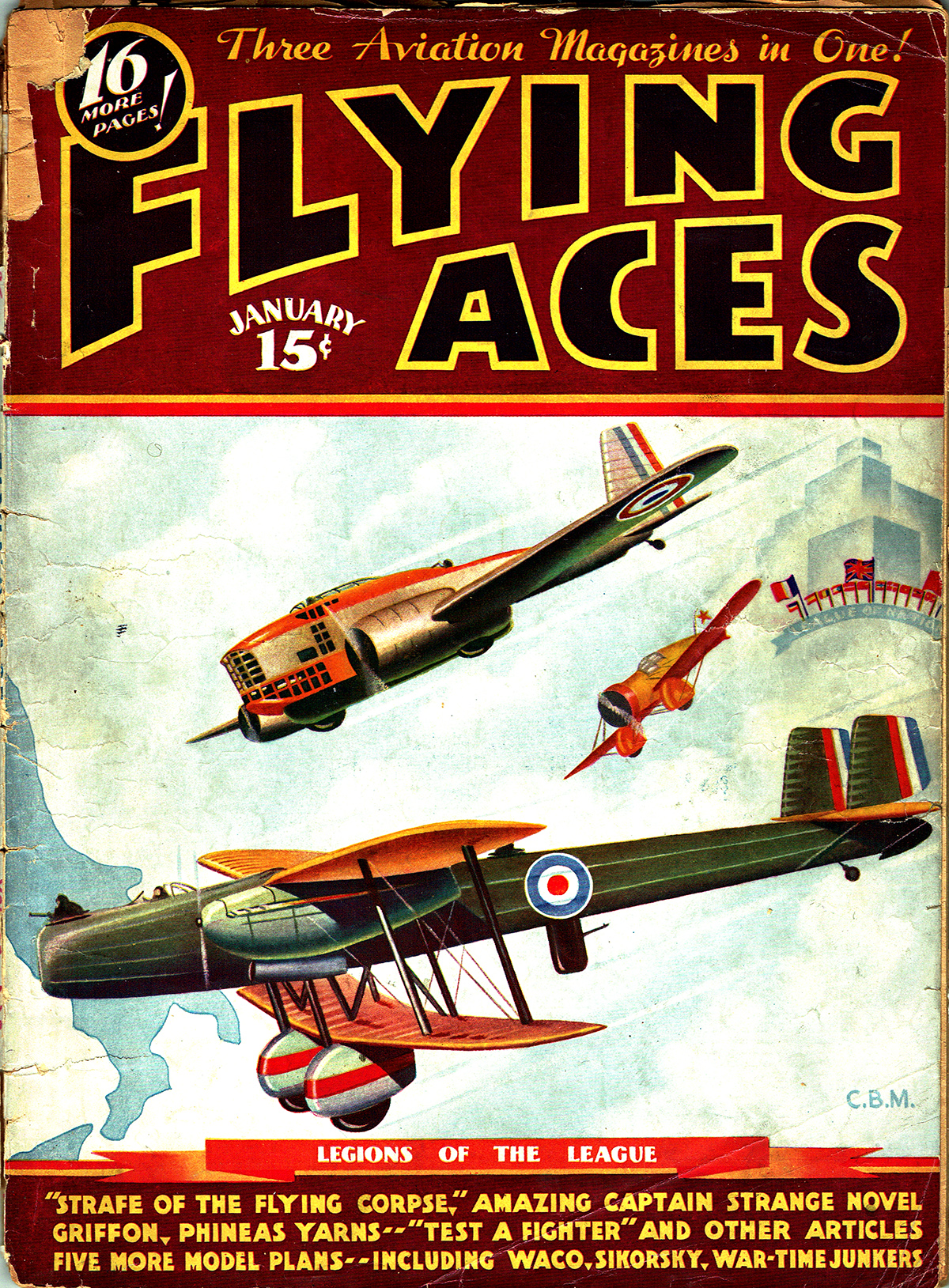
Flying Aces, January 1936 by C.B. Mayshark
Legions of the League: Thrilling Story Behind This Month’s Cover





